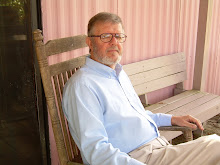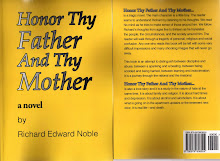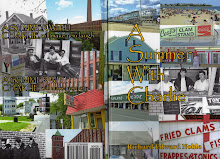The Eastpointer
Privatization of the Bay
By Richard E. Noble
A number of years ago a state program came to our area. The big push at that time was the privatization of anything and everything. Apalachicola Bay was to be divided up into one acre leases and rented to qualified applicants for the purpose of "farming" their own oysters.
The program had numerous problems and large local opposition. Many oystermen along with fishermen, crabbers and shrimpers were very much opposed to any leasing or privatization of the public resources. All the other users of the bay, even the sport fishermen, found the idea problematic.
But I am not interested in rehashing all the arguments that resulted from that program. I want to talk about an idea for developing the bay that never seemed to get off the ground or even get notice.
I had been communicating with a number of universities and research centers with regards to this notion of farming oysters. I had contacted a professor of Marine Biology at FSU among others. His name was Dr. Livingston and he had done considerable research in Apalachicola Bay. While talking to him on the phone he informed me of a book that he had written describing a plan that he had devised for the future of Apalachicola Bay and the National Estuary.
He wanted the Natural Estuary to grow into a marine biology center and eventually establish a nursery and a hatchery. Local high school students would take courses there and get hands-on experience. Marine biology students from FSU would also train and learn at the facility in Apalach. There would eventually be trained managers to run the hatcheries. Oyster harvesting could be improved with bed building and seed planting if it proved viable. Fish hatchling like mullet, spotted sea trout, flounder etc. could be planted. White shrimp, brown shrimp and even blue crabs could be grown and seeded in the bay.
The program could be supported in many ways. As in Michigan and Oregon special stamps could be issued and sold to sport and commercial fisherman alike. The local government, the state, the sport fishing community, tourist fishing, and the commercial fishing industry could all contribute to a healthy and productive bay. Profits could be enhanced and good jobs developed locally.
I thought this was the greatest idea I had heard. Everyone would benefit. All cost would be shared. Profits would be taxed as always but there would be more and more profits. New good paying jobs for local children would be developed. The existing industries would not be challenged but complimented. Everyone could learn and everyone would prosper.
I wrote letters to the local newspaper and told everybody about this plan of Dr. Livingston but the idea received no attention. A conversation or dialogue never ensued. I could never understand it. Everybody talked of saving and improving the bay but nobody gave this great idea a second glance.
I recently covered the county commission meetings for a few years and I heard lots and lots of talk about the bay. But never once did I hear this idea of a hatchery and science lab ever mentioned.
Carol is originally from Michigan and we spent a good deal of time up there working, visiting and enjoying their fisheries. They developed a network of hatcheries that are credited with saving Lake Michigan. They hatched eggs and planted Steelhead and Salmon fingerlings. It became a fisherman's paradise. Carol and I caught huge Salmon and Steelhead trout on the piers and channel walls and up some tributaries and at the base of different dams. It was quite a thrill to battle with a ten to fifteen pound Coho Salmon or a Rainbow Steelhead trout of equal size.
My guess is that this column will also go unnoticed. The bay has too many problems. If the flow coming down the river isn't improved who knows what will be the result. And once again we are in a period of fiscal restraint. I think that we all have to learn that there is a difference between "investment" spending and other types of government spending. When we invest in something it will one day bring a return to the country in good jobs and increased revenue. This type spending is hardly comparable to pork-barrel spending or building bridges to nowhere. But if there is no investment, private or public, there will be no growth and no improvement. When the private business community stops investing, unfortunately the government must take up the slack or it is back to 1929 and the 1930's.
Our bay is still pretty much of a mystery. No one knows how productive it could be or what capacity it has for all the different species. It would be interesting to find out rather than to stand by and watch it die.
Honor Thy Father and Thy Mother, Hobo-ing America and A Summer with Charlie are books written by Richard E. Noble. They are all for sale on Amazon.com. Richard Noble is a freelance writer and has been a resident of Eastpoint for 30 years. If you would like to stock his books in your store or business email Richard at richardedwardnoble@gtcom.net.
skip to main |
skip to sidebar


G.E. Nordell's List of Labor History books
Search This Blog
Popular Posts
-
Bea’s Sandwich Shop Lawrence, Mass - My Hometown By Richard E. Noble Bea’s sandwich shop was a big memory for those of us...
-
John Pierpont Morgan 1837- 1913 By Richard E. Noble “Morgan the Magnificent - If ever there thrived a money potentate whose fortune was p...
-
Jews, God and History By Max I. Dimont Book Review By Richard Edward Noble Max I. Dimont is an ex-shoe salesman and unskilled la...
-
Social Security Commentary By Richard E. Noble The original Social Security legislation was passed in 1935. It covered employees w...
-
IF I WERE A BUTTERFLY By Richard E. Noble If I were a butterfly, I could flap my wings, and fly from flower to flower... Hour... upon hour ....
-
The Hobo Philosopher Rice Cakes – Yummy, Yummy. By Richard E. Noble My wife, over the past 30 years, has probably been on every di...
-
Politically Incorrect Humor/Commentary By Richard E. Noble Obviously, I grew up in the age of political incorrectness. Clearly I was raised ...
-
The Eastpointer Why do mullet jump? By Richard E. Noble Mullet has been a staple of life for decades here in Franklin County. Most other pl...
-
Lawrence – My Hometown Lennie’s on the Turnpike Richard E. Noble Being a jazz buff from early on my favorite nightspot was Lennie’s on the T...
-
Lawrence - My Hometown The Den Rock Drive-in By Richard E. Noble The Den Rock drive-in was on route 114 before the Den restaurant and pa...
Hobo Notes
Licensed book sellers and distributors - buy my books wholesale
Books by Richard Edward Noble. Click on covers below for more info and purchasing instructions.
Bloggin' Be My Life
It's All About Love
A Little Something
Bits and Pieces
A Baker's Dozen
Cat Point - and Them Dang Oyster People
The Eastpointer
A Summer with Charlie - Lawrence
Hobo-ing America
"Just Hangin' Out Ma"
That Old Gang of Mine
Come On-A My House
Standing on the Corner is # 6 in the lawrence My Hometown series.
Honor Thy Father and Thy Mother
Noble Notes on Famous Folks
Mein Kampf - An Analysis of Book One
America on Strike
Talk Radio - Lawrence, Ma. WCCM
Richard Edward Noble

About Me

- Richard Edward Noble
- MY NAME IS RICHARD EDWARD NOBLE. I AM A FREELANCE WRITER AND I HAVE PUBLISHED 12 BOOKS:"THE EASTPOINTER" - SELECTIONS FROM AWARD WINNING NEWSPAPER COLUMN - "A LITTLE SOMETHING" - POETRY WITH PROSE -"HONOR THY FATHER AND THY MOTHER" - A NOVEL ABOUT GROWING UP IN THE NEW ENGLAND MILL TOWN OF LAWRENCE, MASS, "HOBO-ING AMERICA" - A WORKINGMAN'S TOUR OF THE U.S.A. - "A SUMMER WITH CHARLIE" - THE STORY OF A YOUNG SAILOR'S LAST DAYS AT SALISBURY BEACH, "NOBLE NOTES ON FAMOUS FOLKS" - HUMOROUS ANECDOTES ON FAMOUS FOLKS IN HISTORY, "AMERICA ON STRIKE" HISTORY BOOK - A SURVEY OF LABOR STRIKES IN AMERICA; "A BAKER'S DOZEN" A BOOK OF HUMOROUS SHORT STORIES; "JUST HANGIN' OUT, MA" - GROWING UP IN THE 40'S, 50'S AND 60'S IN LAWRENCE, MY HOMETOWN, "TENEMENT DWELLERS" - SEQUEL TO JUST HANGIN OUT, MA; MEIN KAMPF - ANALYSIS OF BOOK ONE - HISTORY. CAT POINT - AND THEM DANG OYSTER PEOPLE - SEQUEL TO THE EASTPOINTER All 12 BOOKS ARE AVAILABLE ON AMAZON.COM, BARNES AND NOBLE AND OTHER INTERNET SOURCES OR FROM NOBLE PUBLISHING. ALL 12 OF MY BOOKS ARE NOW ON KINDLE AT BARGAIN PRICES TOO. IF YOU WOULD LIKE MORE INFORMATION ABOUT DISCOUNTS AND SPECIAL OFFERS E-MAIL ME. MY EMAIL IS ON MY PROFILE PAGE.




































